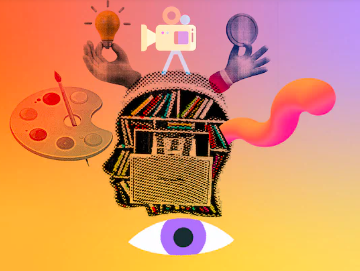
Visual Storytelling in the Digital Era: Empowering Creativity Through Technology
In a world increasingly driven by digital content, storytelling has found new mediums and audiences like never before. Visual narratives, once reserved for cinema screens and television broadcasts, are now being crafted by individuals, brands, and organizations across countless platforms.
The ability to create compelling stories through visuals is no longer limited to those with access to expensive equipment or professional training. Today, thanks to technological innovation, anyone with a vision can create videos that resonate with a global audience.
The democratization of video creation tools has been a major turning point. Platforms now offer intuitive drag-and-drop editors, pre-designed templates, AI-assisted editing features, and royalty-free libraries of music, images, and footage. Whether it’s a student crafting a documentary, an entrepreneur marketing a new product, or an activist raising awareness for a cause, the capacity to create videos effectively has become an essential skill in the digital communication toolbox.
This shift has also transformed the way we consume information. Studies show that users are far more likely to engage with video content compared to text-based media. Social media platforms prioritize videos in their algorithms, brands invest heavily in video marketing strategies, and educators integrate videos into their learning materials to enhance retention and engagement. As a result, the pressure to not only create videos but to do so creatively and authentically has never been greater.
Artificial intelligence, once a distant concept, now plays a key role in this creative revolution. AI can suggest video cuts, analyze audience engagement to optimize future content, or even generate entire animated sequences based on a few text prompts. Yet, while technology provides unprecedented tools, the heart of impactful storytelling remains human — the ability to connect, inspire, and evoke emotion.
Moreover, the rise of short-form video platforms has emphasized the importance of brevity and authenticity. Creators are challenged to deliver powerful messages within mere seconds. Whether showcasing a behind-the-scenes glimpse of a business, narrating a personal journey, or advocating for social change, the way we create videos today often reflects a desire for raw, genuine connection over polished perfection.
Looking ahead, the evolution of video storytelling seems limitless. Augmented reality (AR), virtual reality (VR), and immersive 360-degree experiences are already redefining audience interaction. As these technologies become more accessible, the way we create videos will continue to evolve — offering richer, more interactive narratives that blend the physical and digital worlds.
In this landscape, creativity remains the cornerstone. While tools may simplify the technical aspects, the imagination and voice behind the story are what truly capture attention and leave a lasting impact. As technology advances, the opportunity to tell meaningful stories through video becomes not just easier, but more powerful. It is up to each creator to harness these tools thoughtfully, crafting visual experiences that educate, entertain, and inspire generations to come.
RELATED ARTICLES
The Ultimate Guide to Bangar Gransbough, Belfast
Johann Heinrich Leonard III Baschi: A Visionary of Art, Science, and Social Change
Ultimate Guide to the IN4412 Regulator in Garland, TX
Complete Guide to R. STAHL Explosion-Proof Floodlight – Part-No: 6121/5312-640-01


